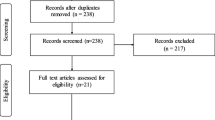Abstract
Electronic textbook usage is increasing within higher education while use of traditional textbooks is declining. While some research concerning student preference for textbook type provides insight into student choices, there is a gap in the literature regarding use of electronic textbooks within dental assisting programs. The purpose of this study was to explore dental assisting students’ preferences regarding electronic textbook usage during their professional education. Two questionnaires were administered to a group of dental assisting students to ascertain their preferences. One questionnaire was given during the Dental Assisting Program orientation at the beginning of the academic year. The second questionnaire was administered at the conclusion of a nine-month dental assisting curriculum in which students were required to use electronic textbooks for approximately half of their courses. Results from the questionnaires indicated that while students were open to the idea of electronic textbooks and willing to use them prior to beginning in the Dental Assisting Program, at the conclusion of the Program they overwhelmingly preferred to use traditional print textbooks.
Similar content being viewed by others
References
Brown, R. (2011). Student acceptance and use of e-reader technology and e-books as an alternative to textbooks. Proceedings of the Academy of Educational Leadership, 16(2), 5–9.
Brunet, D. P., Bates, M. L., Gallo III, J. R., & Strother, E. A. (2011). Incoming dental students’ expectations and acceptance of an electronic textbook program. Journal of Dental Education, 75(5), 646–652.
Connell, C., Bayliss, L., & Farmer, W. (2012). Effects of ebook readers and tablet computers on reading comprehension. International Journal of Instructional Media, 39(2), 131–140.
Duncan, R. (2011). Ebooks and beyond: Update on a survey of library users. Australasian Public Libraries & Information Systems, 24(4), 182–193.
Foasberg, N. M. (2011). Adoption of e-book readers among college students: A survey. Information Technology and Libraries, 30(3), 108–128.
Folb, B. L., Wessel, C. B., & Czechowski, L. J. (2011). Clinical and academic use of electronic and print books: The health sciences library system at the University of Pittsburgh. Journal of the Medical Library Association, doi: 10.3163/1536-5050.99.3.009
Robinson, S. & Stubberud, H. A. (2012). Student preferences for educational materials: Old meets new. Academy of Educational Leadership Journal, 16, 99–109.
Rose, E. (2011). The phenomenology of on-screen reading: University students’ lived experience of digitised text. British Journal of Educational Technology, doi: 10.1111/j.1467-8535.2009.01043.x
Shepperd, J. A., Grace, J. L., & Koch, E. J. (2008). Evaluating the electronic textbook: Is it time to dispense with the paper text? Teaching of Psychology, doi: 10.1080/00986280701818532
Strother, E. A., Brunet, D. P., Bates, M. L., & Gallo III, J. R. (2009). Dental students’ attitudes towards digital textbooks. Journal of Dental Education, 73(12), 13611365.
Author information
Authors and Affiliations
Corresponding author
Rights and permissions
About this article
Cite this article
Parsons, K.M. What Are They Thinking? Dental Assisting Students' Feelings About E-Books. TECHTRENDS TECH TRENDS 58, 78–86 (2014). https://doi.org/10.1007/s11528-014-0738-5
Published:
Issue Date:
DOI: https://doi.org/10.1007/s11528-014-0738-5




